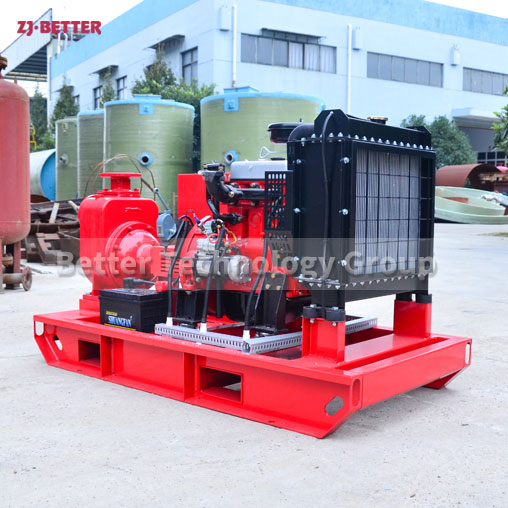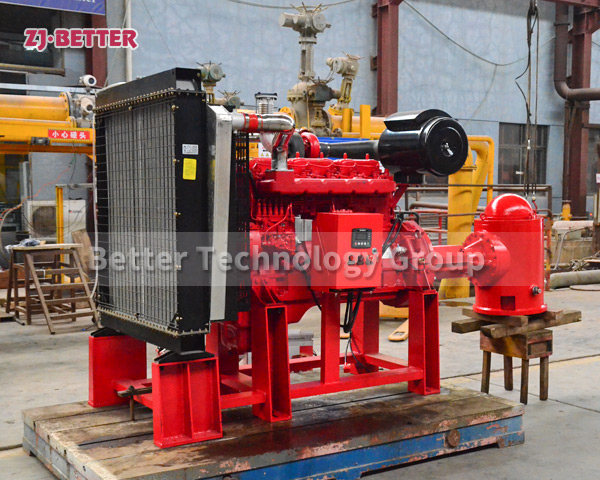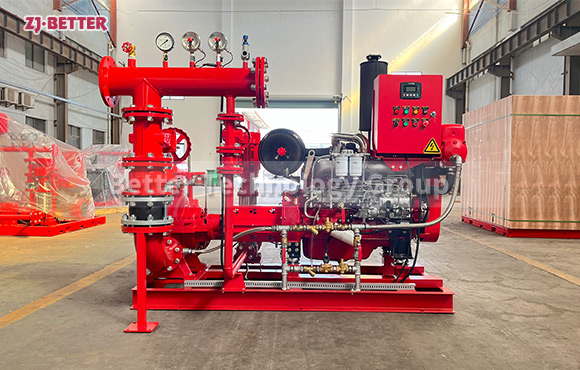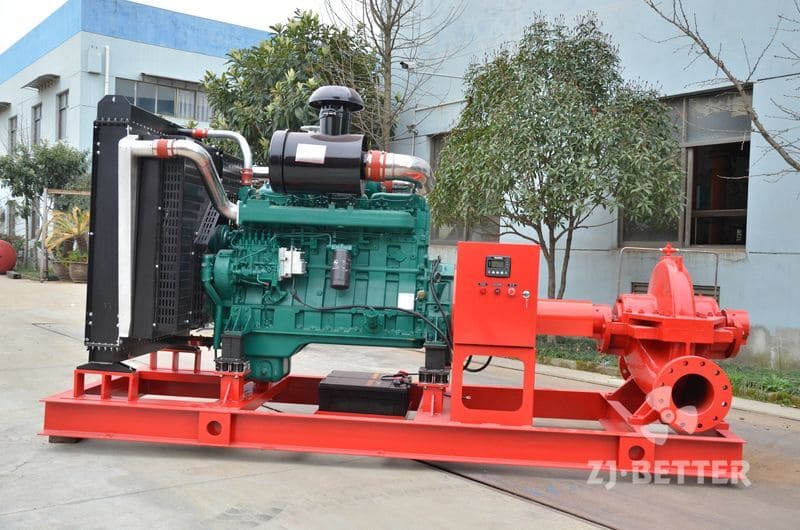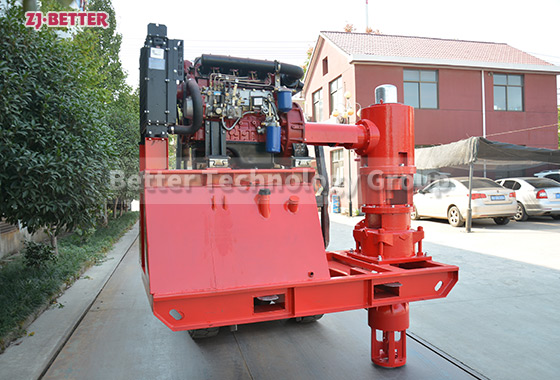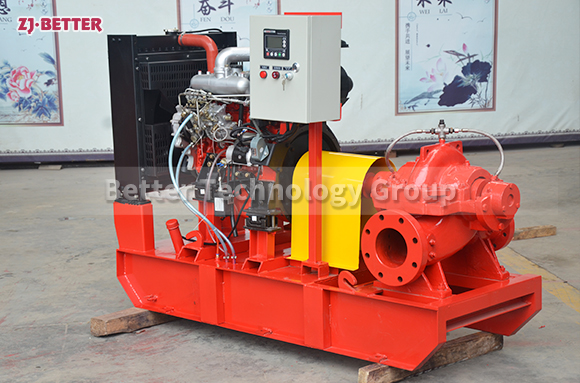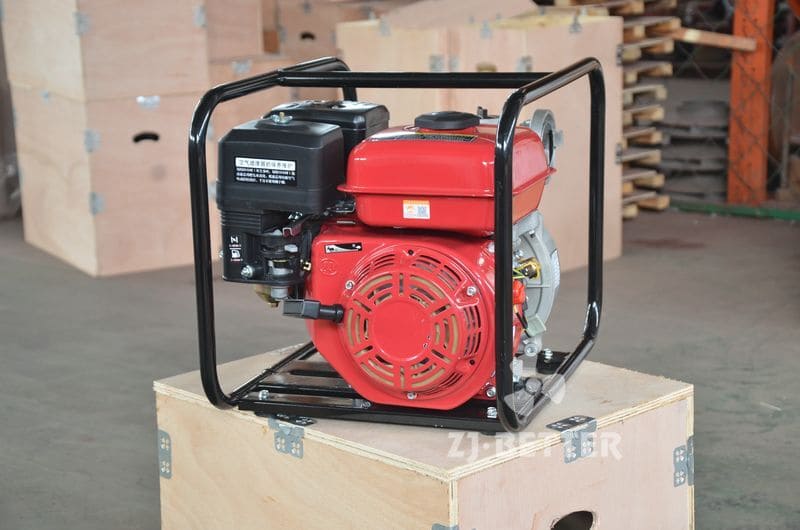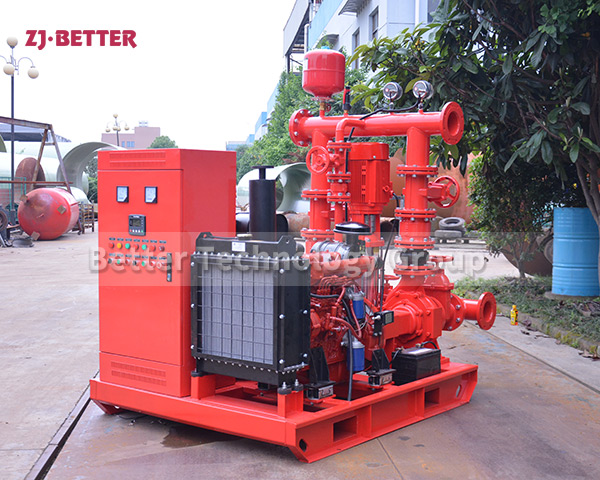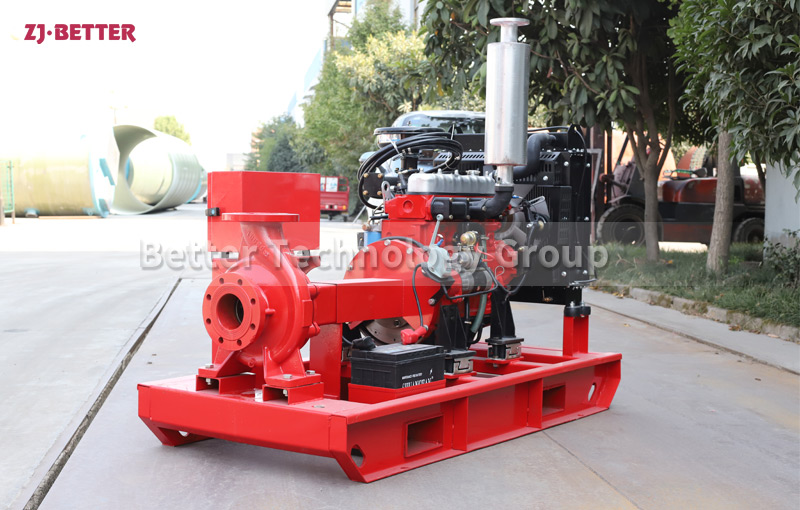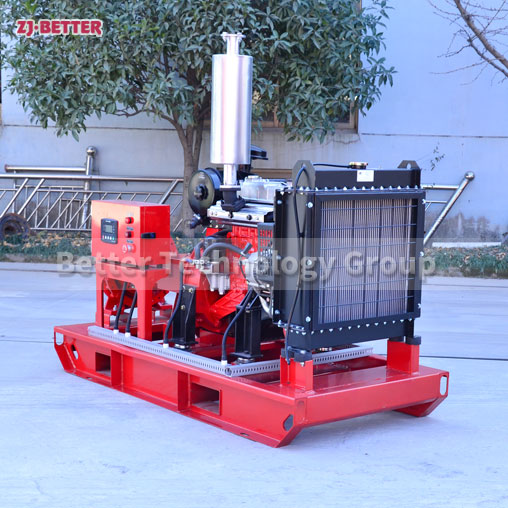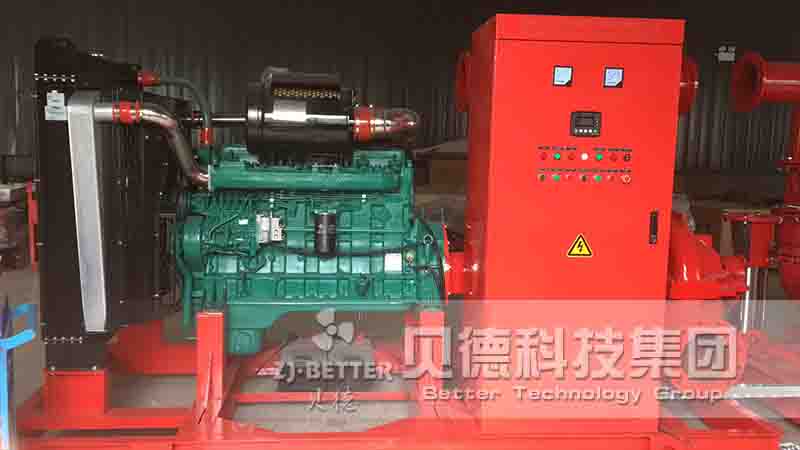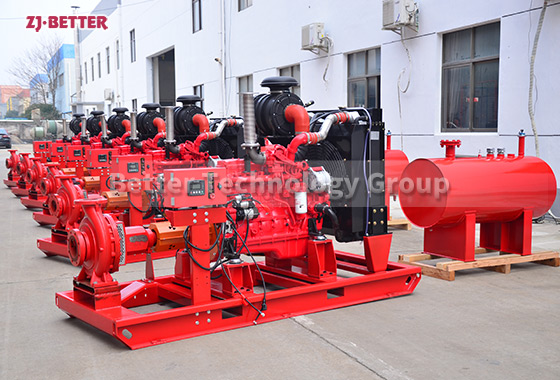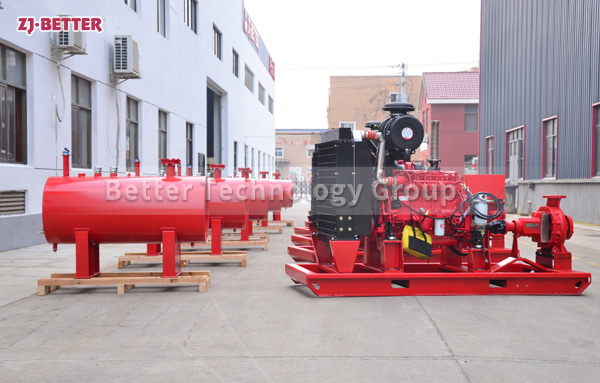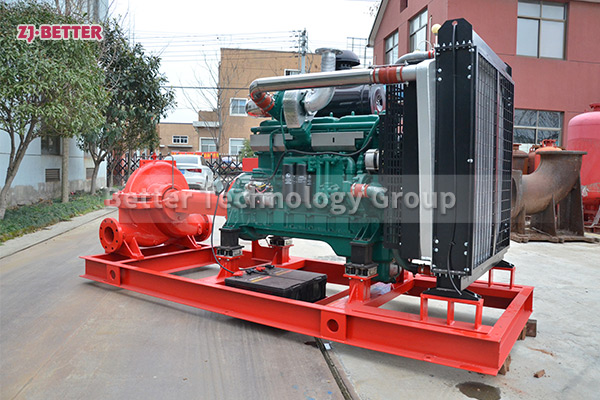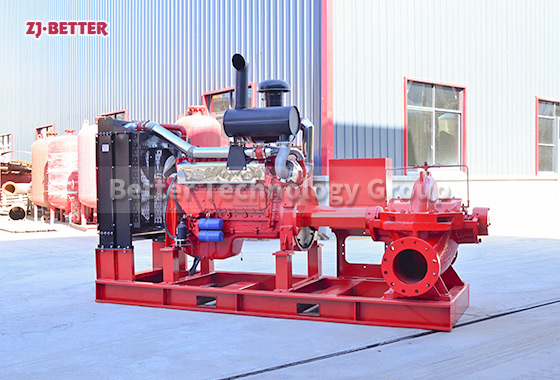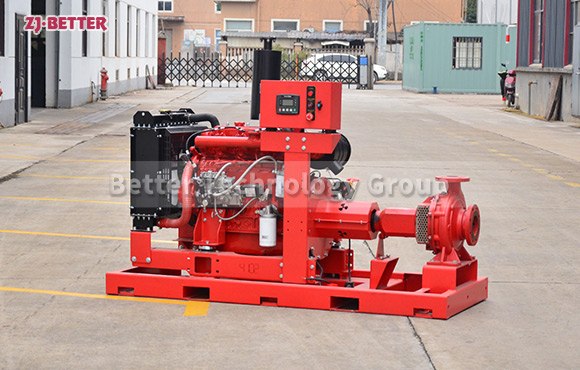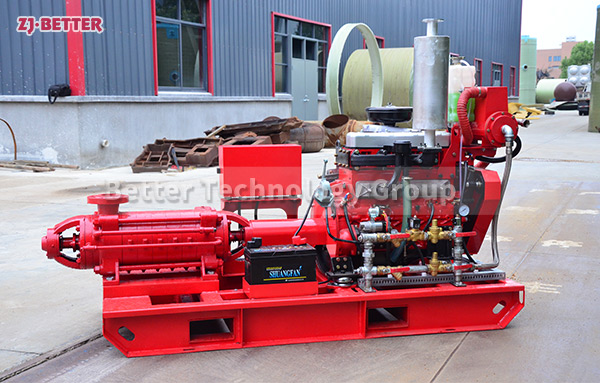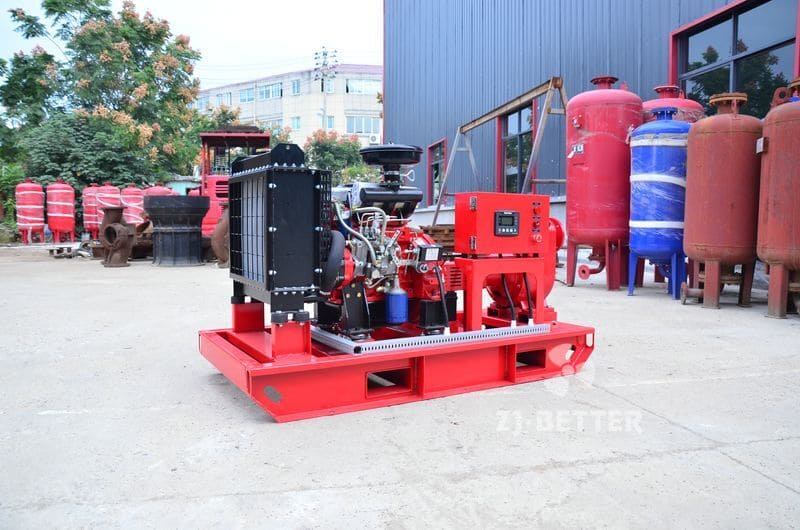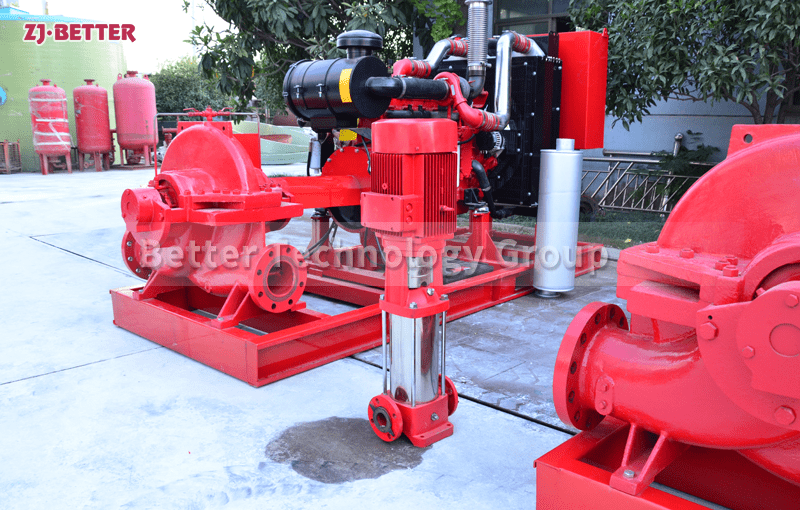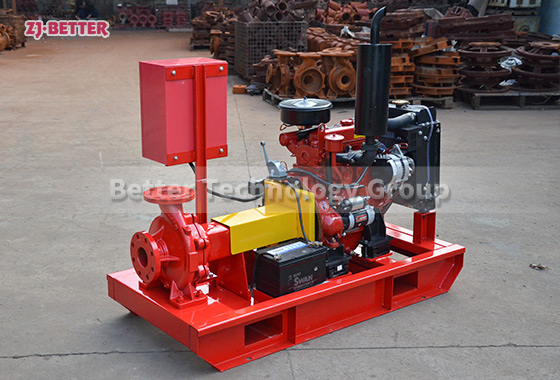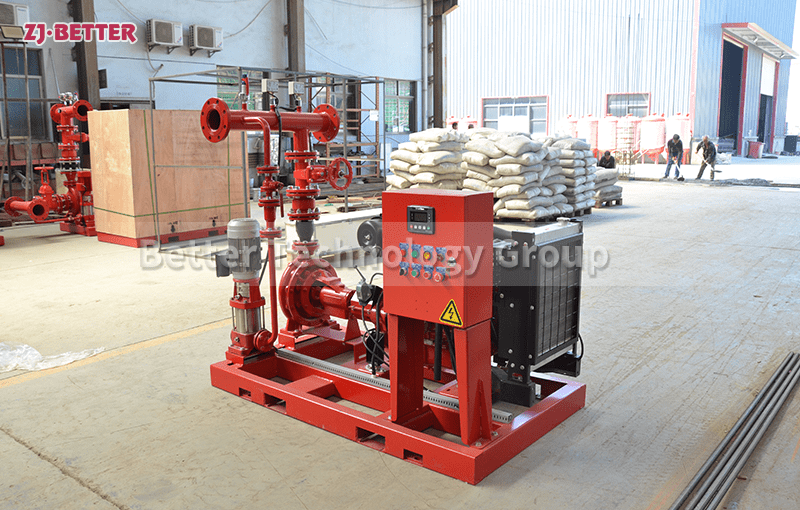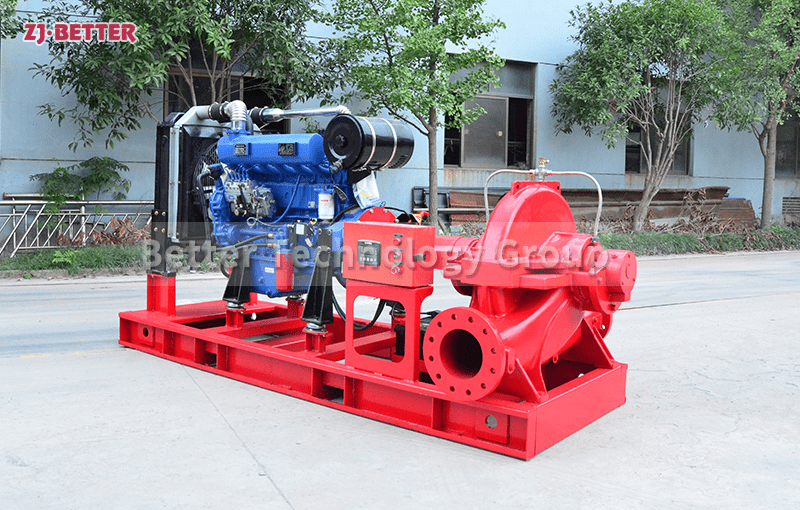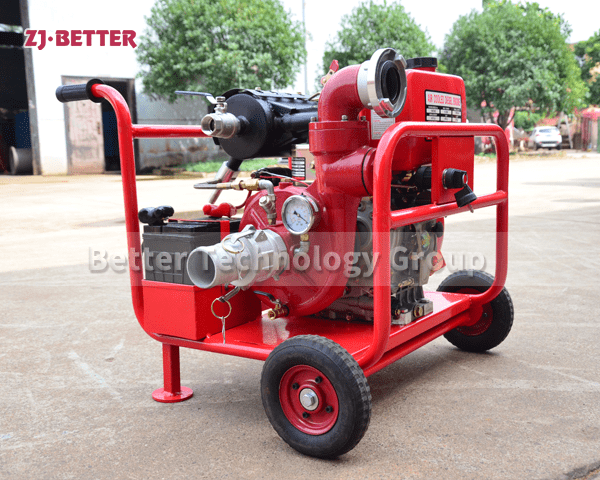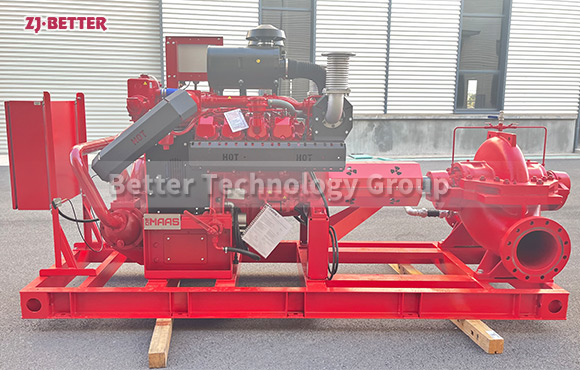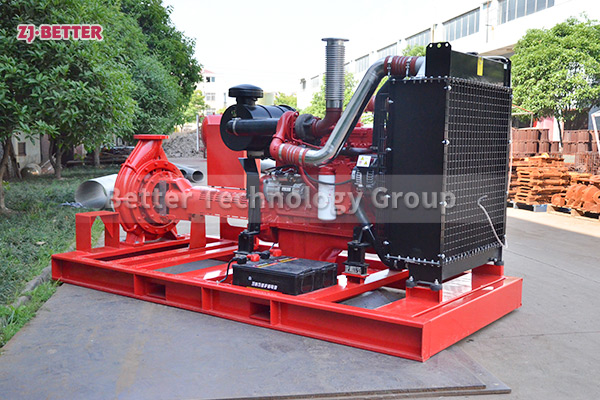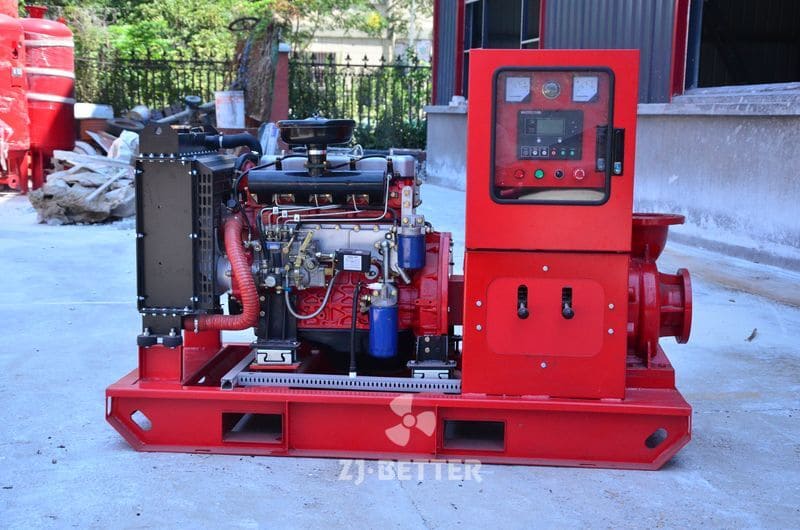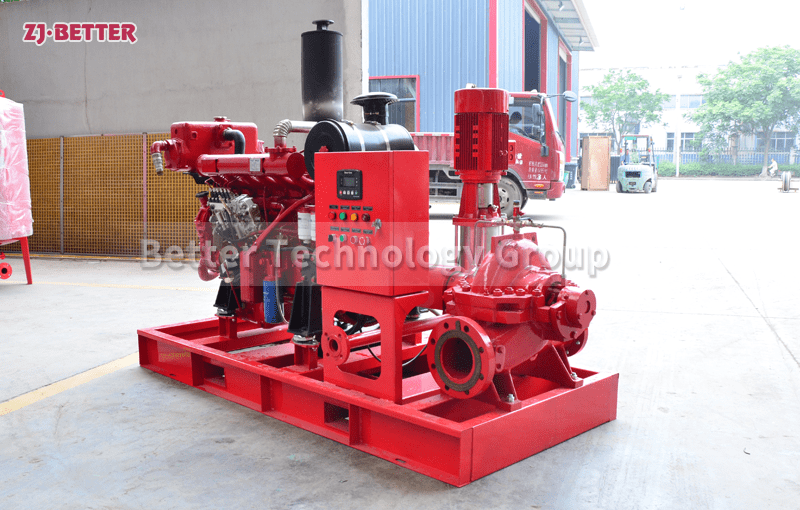Product Use Of Diesel Self-priming Fire Pump
It is suitable for the fire protection requirements of high-rise buildings, hotels, commercial buildings, various civil buildings, subways, light rails, railway stations, industrial and mining enterprises and other important departments. Domestic water supply system.
Features of self-priming fire pump:
1. The pump mechanism is compact, small in size and beautiful in appearance. Its vertical mechanism determines that the installation area is small, and its center of gravity coincides with the center of the pump foot, thus enhancing the running stability and service life of the pump.
2. The suction and discharge ports of the fire pump are horizontal, which simplifies the connection of pipelines.
3. According to the needs, the suction port and the discharge port can be installed in the same direction or in several different directions of 90°, 180°, and 270° to meet different connection occasions.
4. The pump pressure can be satisfied by increasing or decreasing the number of pump stages and cutting the outer diameter of the impeller as required, without changing the installation area, which is not available in other pumps.
5. The rotor of the fire pump has a small winding, stable operation, low vibration, low noise and long service life.

